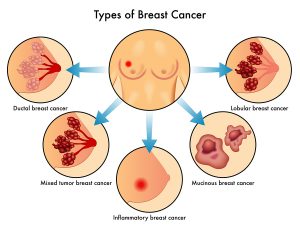Medical News Today reported on Jan. 2, 2017 that inflammatory breast cancer is suppressed by chili pepper compound. This article was based on a research paper from the Ruhr University in Bochum, Germany. Several other institutions collaborated in the study. The Augusta Clinic in Bochum was one of the collaborators. The Hospital Herz-Jesu-Krankenhaus in Dernbach was another. The Centre of Genomics in Cologne was the third.
The lead author Hanns Hatt explained that his team investigated triple-negative breast cancer cells in cell culture. The other breast cancer types respond to treatments better. With the help of surface receptor testing doctors are able to distinguish various types of breast cancer. The first type is estrogen-positive breast cancer. The second type is progesterone-positive breast cancer. The third type is the HER2 (epidermal growth factor receptor 2) breast cancer type. The remainder of these breast cancer cases are called triple-negative breast cancer. About 15% of breast cancer cases are triple-negative cancers. They are also also known as triple negative inflammatory breast cancers.
The first three breast cancer types are responsive to various treatment protocols. But the triple-negative breast cancer type (inflammatory breast cancer) is aggressive and is not responding to chemotherapy very well, particularly not in the advanced stages.
All this might change with the discovery of the German research team. They found that a component of chili pepper called capsaicin can kill triple-negative breast cancer cells in culture. The cell line comes with the name SUM149PT cells.
Capsaicin effective against inflammatory breast cancer
The investigators examined this in more detail and found the following:
- Capsaicin works on cell membrane channels. One of the important channel types on cancer cells is the transient receptor potential (TRP) channel. This type of channel is an ion channel through the cell membrane. It allows calcium and sodium ions to migrate across the membrane. In cancer cells it is involved with cancer cell growth. There are many subtypes of TRP channels. One important subtype is the olfactory receptor, particularly the TRPV1 receptor. This is receptor is abundantly present in your nose lining as the olfactory receptor. It enables us to smell. But you can find it also in other organs including breast tissue. Dr. Hatt and his team pursued this further. They found that capsaicin activates the TRPV1 receptor.
- But they looked for other substances that also activate the TRPV1 receptor. Helional is one of the other substances doing this job. This is an aldehyde that is used in soaps and laundry detergent to produce a fresh sea breeze smell.
- The research team further analyzed 9 different triple-negative breast cancer biopsies from different patients. They examined them for TRPV1 receptors. They all contained this receptor in their tissue.
- The team could show that both capsaicin and helional activated the TRPV1 receptors in SUM149PT breast cancer cells. Subsequently they saw that cancer cells were destroyed. The cancer cells that survived had slowed down in growth, which may translate into a lower metastasizing potential according to Dr. Hatt.
- It is interesting to note that the chemotherapeutic agent arvanil was activating TRPV1 receptors in brain cells. This research was done with malignant glioma in mice. Arvanil slowed down brain tumor growth.
Conclusion
At the present time only in vitro research (not clinical research in humans) exists. But it has great potential to very quickly turn into a potentially very useful treatment modality. Particularly for women with triple-negative breast cancer. At the present time only chemotherapy will be effective, but only in the beginning of this type of inflammatory breast cancer. It will be extremely useful to have another treatment modality that can treat this type of breast cancer. Capsaicin has fewer side effects than chemotherapy. However, clinical trials are needed next to evaluate the effect in cancer patients with triple-negative breast cancer.







